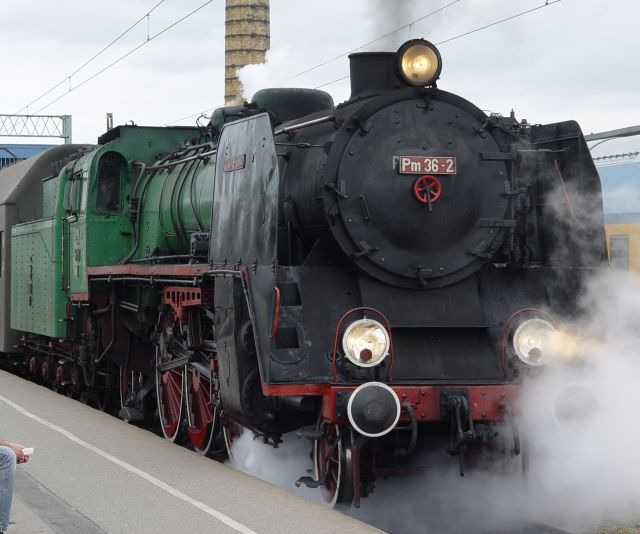|
PKP Class SP30
SP30 is a Polish series of diesel passenger locomotives used by PKP. History In the 1970s 107 items of SM30 class locomotives were modified to heat old passenger wagons, which were modernized with 500V electric heaters, and as a result their designation was changed to SP30 (meaning a diesel locomotive able to pull passenger trains). Bogdan Pokropiński, ''Lokomotywy spalinowe produkcji polskiej'', WKiŁ, Warsaw, 2009, , p. 69-72 A prototype locomotive, SM30-232 was converted in 1970. Then, in 1974-1977, 106 locomotives were converted this way by the ZNTK Nowy Sącz (of those, 75 in 1974). They retained their original SM30 class numbers. Those machines remained in regular service until the late 1980s. Because of a withdrawal of old wagons, in 2000 all of them were again, after dismounting heating systems, returned to SM30 series. A similar modification was applied to SM42 class, resulting in the SU42 class. Technical data SP30 is a Bo′Bo′ locomotive, what means it runs on two ... [...More Info...] [...Related Items...] OR: [Wikipedia] [Google] [Baidu] |
Fablok
Fablok is a Polish manufacturer of locomotives, based in Chrzanów. Until 1947 the official name was ''First Factory of Locomotives in Poland Ltd.'' ( pl, Pierwsza Fabryka Lokomotyw w Polsce Sp. Akc.), Fablok being a widely used syllabic abbreviation of ''Fabryka Lokomotyw'', among others as the company's telegraphic address. It is now named "BUMAR - FABLOK S.A. (corporation)". Fablok is located in the town of Chrzanów in Lesser Poland. As of 2009, Fablok no longer builds new locomotives. History Early years 1919-1939 Fablok was established in 1919. A year later a contract was signed with the Polish government to supply 1,200 steam locomotives within ten years to the Polish State Railways (PKP). The first locomotive was delivered on 7 April 1924. In 1931, the first locomotive was exported to the Bulgarian State Railways. During 1935 and 1936, five electric locomotives were built under license from Metropolitan-Vickers. In 1935–1936, Fablok produced five Luxtorpedas (fast ... [...More Info...] [...Related Items...] OR: [Wikipedia] [Google] [Baidu] |
Alternator
An alternator is an electrical generator that converts mechanical energy to electrical energy in the form of alternating current. For reasons of cost and simplicity, most alternators use a rotating magnetic field with a stationary armature.Gordon R. Selmon, ''Magnetoelectric Devices'', John Wiley and Sons, 1966 no ISBN pp. 391-393 Occasionally, a linear alternator or a rotating armature with a stationary magnetic field is used. In principle, any AC electrical generator can be called an alternator, but usually the term refers to small rotating machines driven by automotive and other internal combustion engines. An alternator that uses a permanent magnet for its magnetic field is called a magneto. Alternators in power stations driven by steam turbines are called turbo-alternators. Large 50 or 60 Hz three-phase alternators in power plants generate most of the world's electric power, which is distributed by electric power grids. History Alternating current generating ... [...More Info...] [...Related Items...] OR: [Wikipedia] [Google] [Baidu] |
Bo′Bo′ Locomotives
B-B and Bo-Bo are the Association of American Railroads (AAR) and British classifications of wheel arrangement for railway locomotives with four axles in two individual bogies. They are equivalent to the B′B′ and Bo′Bo′ classifications in the UIC system. The arrangement of two, two-axled, bogies is a common wheel arrangement for modern electric and diesel locomotives. Bo-Bo Bo-Bo is the UIC indication of a wheel arrangement for railway vehicles with four axles in two individual bogies, all driven by their own traction motors. It is a common wheel arrangement for modern electric and diesel-electric locomotives, as well as power cars in electric multiple units. Most early electric locomotives shared commonalities with the steam engines of their time. These features included side rods and frame mounted driving axles with leading and trailing axles. The long rigid wheelbase and the leading and trailing axles reduced cornering stability and increased weight. The Bo-Bo con ... [...More Info...] [...Related Items...] OR: [Wikipedia] [Google] [Baidu] |
Fablok Locomotives
Fablok is a Polish manufacturer of locomotives, based in Chrzanów. Until 1947 the official name was ''First Factory of Locomotives in Poland Ltd.'' ( pl, Pierwsza Fabryka Lokomotyw w Polsce Sp. Akc.), Fablok being a widely used syllabic abbreviation of ''Fabryka Lokomotyw'', among others as the company's telegraphic address. It is now named "BUMAR - FABLOK S.A. (corporation)". Fablok is located in the town of Chrzanów in Lesser Poland. As of 2009, Fablok no longer builds new locomotives. History Early years 1919-1939 Fablok was established in 1919. A year later a contract was signed with the Polish government to supply 1,200 steam locomotives within ten years to the Polish State Railways (PKP). The first locomotive was delivered on 7 April 1924. In 1931, the first locomotive was exported to the Bulgarian State Railways. During 1935 and 1936, five electric locomotives were built under license from Metropolitan-Vickers. In 1935–1936, Fablok produced five Luxtorpedas ... [...More Info...] [...Related Items...] OR: [Wikipedia] [Google] [Baidu] |


